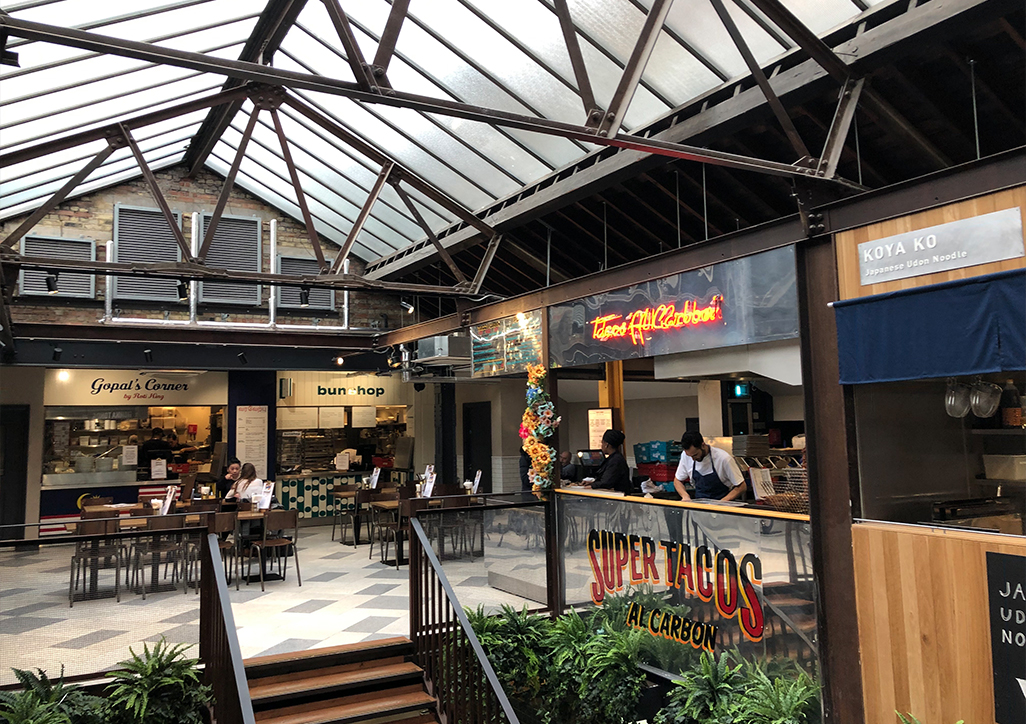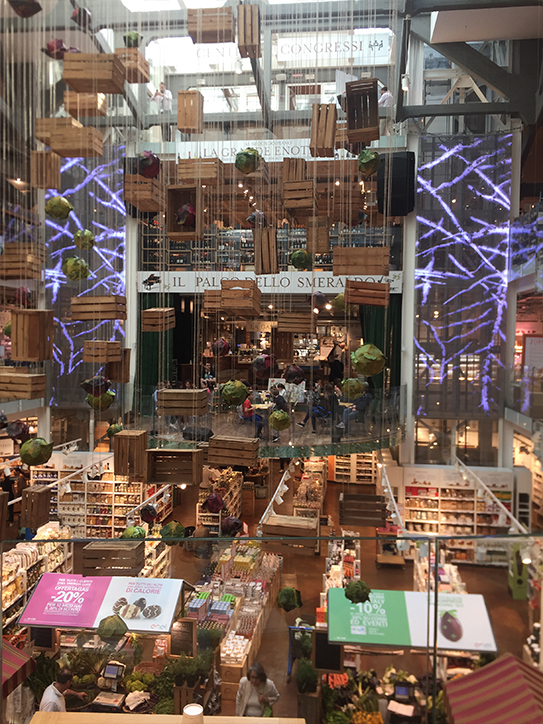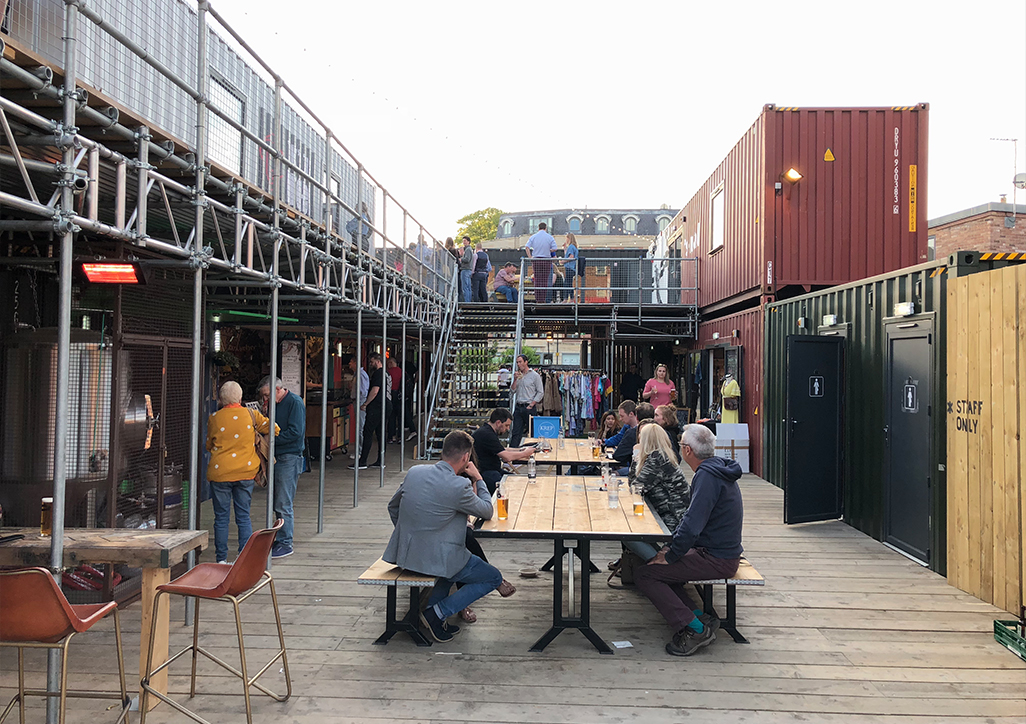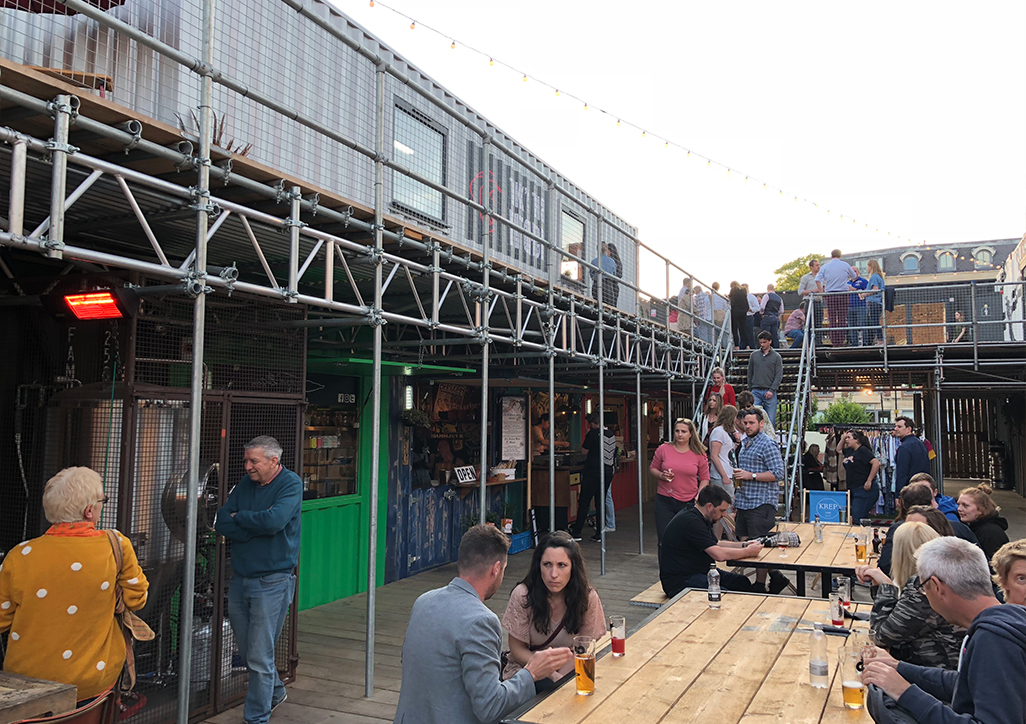Do you remember the days of the small collection of fast food outlets, usually in a shopping centre and comprising of MacDonalds, KFC, Burger King, Spud u Like, Quiznos, Subway and Harry Ramsdens? All huddled around a number of cheap looking chairs and tables in an uninteresting and clinical environment that we used to call a ‘food court’? For many of us this was the only food offer available outside a formal dining experience and in my early days in the restaurant industry, these food courts were seen as innovative and even quite sexy!!!
For the first time, a variety of affordable food offers were available under one roof and gave beleaguered parents a much earned rest from the shopping and the irritable, fractious and hungry children. As a young family out shopping, it meant that the kids could have a burger, Mum could have a hot filled potato and Dad, fish and chips. The best bit was that they could all eat together! Importantly, it was an affordable treat. Teenagers exploring their early independence could meet with friends after school and consume litres of fizzy drinks, dip chips into tomato ketchup and share a sneaky ciggie before going back to school.
No? Well you are clearly much younger than I and in many ways, thank goodness – you would have been appalled. So much so, food courts started to die out and whilst not exactly replaced, they fell out of favour with customers preferring to eat in the burgeoning array of new casual dining concepts bursting on to the scene.
As customers became more demanding over food quality, choice and environment, the food operators and the Landlords were forced to up their game to reinvent the food court and over several years, its appearance has undergone several stages of evolution.
Evolution of the food offer generally has been the name of the game over the past 20 years and the eating out market has expanded exponentially. The restaurant scene in the UK is dynamic and world leading in many respects with foreign operators now coming to London for inspiration or to open their own concepts.
Casual Dining has undoubtedly led this charge. ‘Street food’ which has been around forever, particularly abroad, has grown in stature with quality, variety and freshness appealing particularly to the millennial and younger generations. In a relatively short period of time, street food has grown to such an extent that in London and larger regional towns, the individual street food traders have clustered together in small spaces such as public realms, old car parks, roof tops and disused warehouses and buildings. In fact just about anywhere where access is relatively easy, footfall sufficient and rental value is minimal.
As the popularity of these independent food operators grows and evolves, a new kid on the block has materialised and has been whipping up a storm of interest both here and in Europe.
The offer is individual in the main, contains a number single, independent operators offering freshly prepared and clearly defined products and provides a unique setting in which these food vendors can operate. It is the Food Hall or Food Market.
Now food halls have also been around in various guises for hundreds of years. From the bazaars of India and Pakistan, the Souks of North Africa and the weekly travelling markets of the eighteenth and nineteenth centuries across Europe to today’s farmer’s markets. The food halls in established department stores such as Harrods and Fortnum and Mason in London or KDW in Berlin; the established European market of La Boqueria in Barcelona, San Miguel in Madrid, Mathallen in Oslo, Markthal in Rotterdam, Sarona market in Tel Aviv to name but a few and not forgetting our very own Borough market. These markets have been selling fresh produce to customers in some cases for many years. They provided a needed service to the local community and have now become tourist attractions in their own right.
The newer ones, such as Mathallen and Sarona markets have grown up around and because of new communities, almost as an experiment, selling empty space to small entrepreneurial or community businesses that did not have the capital to establish themselves alone.
Eataly has evolved the food hall still further. It is a food focussed department store selling the best produce from Italy. Lisbon’s Time Out market set a new model by leasing space to celebrity chefs from Portugal and creating an environment in the old Lisbon fruit and vegetable market that encompasses restaurants, entertainment and additional event spaces. Sarona follows a similar model.
Many of these food halls or markets share similar success criteria:
Modest rents, great quality offering, very high footfall, additional entertainment offerings and all day trade. Some have become tourist destinations such as Time Out and succeed accordingly. In every case, there is a strong ‘Curator’. A management team that provides the infrastructure within which the individual operators can trade. In many cases that operator will also operate a wet led offer for the venue and it is from this offer, that the Curator will make their profit.
There is a useful piece of research on the Food Halls of Europe by Cushman and Wakefield from November 2017 that has more detailed and topical information.
In the last 10 years, the UK has seen a flurry of food venues come and go, though most seem to have fared reasonably well. The one notable failure was Union Market in Fulham which lasted less than a year in 2011. And the financial model still needs to be proven. Street Feast, now London Union has had arguably the most success in London. Box Park has managed to incorporate both non food retail offerings and food in its original location in Shoreditch although its second location in Croydon is entirely food and leisure based. It is now seeking sights regionally across the UK.
Mercato Metroplitano has been established a few years working with small local food businesses to provide something different for the community of Elephant and Castle and Peckham Levels in the heart of Peckham town centre is an innovative use of and old car park done by the community that contains local food and bar operators. Pergola on the Roof is another operator working to grow a local food offer. This innovation isn’t just restricted to London either,. Mackie Mayor in Manchester ’s Northern Quarter boasts its own food hall situated in a restored former meat market and combines regular events with its variety of food and drink offers. An innovative and interesting environment in which people want to come and spend time not just to refuel but to sit and people watch and importantly, to be part of the scene.
Last but by no means least, Market Halls has taken the capital by storm, establishing itself firstly in Fulham on the site of the aforementioned Union Market and more recently outside Victoria station. A site in Oxford Street is being fitted out and the management team have ambitious plans to role out several more over the coming 5 years. It’s early days but so far so good. It seems that by all accounts, food halls have a strong appeal across all demographic groups – they are on trend and fit well with the growing interest and awareness surrounding good quality fresh food. It will be interesting to watch the progress of these venues over the coming months and see how they fare financially.
As I sat in Market Hall Victoria last week people watching and soaking up the atmosphere, I was reminded of my early experiences in the restaurant industry. I watched as a family of 5 sat down together each with a different food choice and proceeded to eat their lunch whilst happily chatting together. I turned to Andy Lewis – Pratt, the man behind the expansion of Market Halls and with whom I had been discussing the business and said:
‘’You see, there’s nothing new under sun. Food halls or food markets are just posh names for the old food courts!’
He wasn’t amused!




